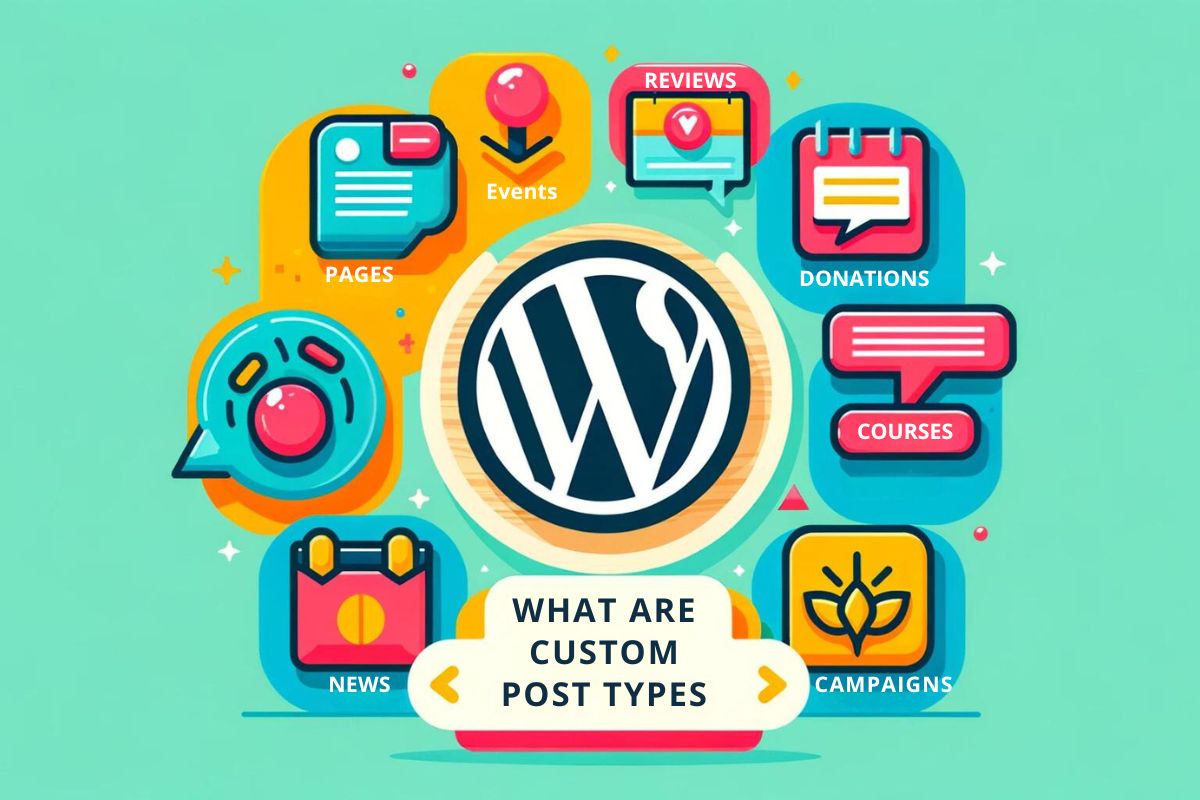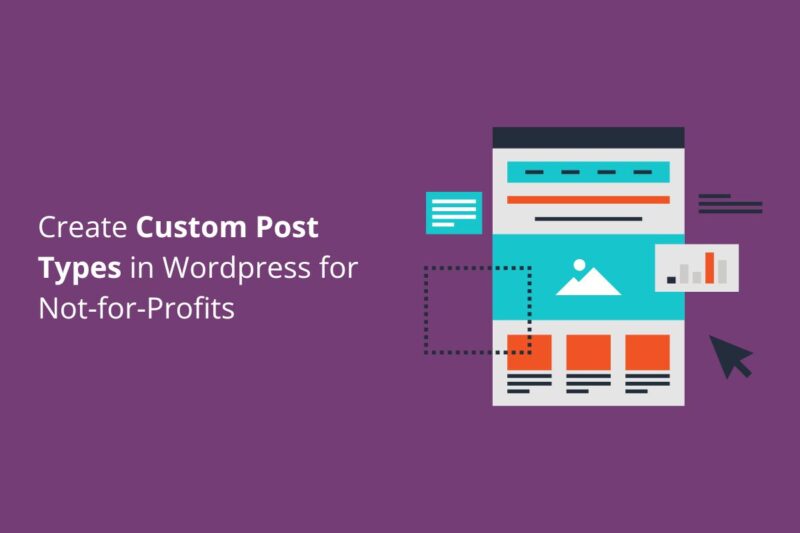In the world of not-for-profits, effective content management is crucial for engaging supporters, donors, and the community. WordPress, with its flexible content management system, offers a powerful tool for organising content through custom post types. This article explores what custom post types are, why they are beneficial, and how you can create and use them to enhance your not-for-profit’s website.

What are post types?
Pretty much all content on a WordPress site is stored internally as a “post,” a throwback to WordPress’ beginnings as a blogging platform. In a base installation of WordPress, the main two types you work directly with are Pages and Posts which you are no doubt familiar with. Many other elements are also stored in the database as posts though including media (images etc) and menu items. even though the interface for managing them is very different to that for Pages and Posts.
The post architecture is intentionally designed to be extended, and many plugins create additional post types for various purposes. For example, WooCommerce adds Products and Orders, while LearnDash adds Courses, Lessons, Topics, and Activities.

Why use different post types?
Theoretically, you could create all your site’s content as either a Page or Post. However, even if no special functionality is needed for a particular type of content, there are several benefits to creating additional post types to organise your content.
Keeping each type of content in a separate post type allows for logical separation on both the front-end and back-end of the site. This improves your SEO, makes it easier for visitors to find what they’re looking for, and enhances your experience managing your site including the ability to restrict users’ access to only the items they need to manage. Using separate post types also allows for different configurations, layouts, and additional custom (meta) fields to best suit each content type.
We regularly add custom post types for various purposes when building sites for clients – in fact it’s very unusual for a site not to include any! Common examples include Resources, Donation Campaigns, and Projects.

How to create custom post types?
As mentioned, many plugins automatically add custom post types to fulfil their purpose. However, creating your own custom post types can be a bit more challenging.
In many cases, your best option is to work with a developer who can set things up for you. If you require custom functionality or a unique front-end layout, this is likely your only option.
If your goal though is just to better organise your content, several plugins provide an interface for you to set up your custom post types without needing to write the necessary code. We recommend Advanced Custom Fields, which also allows you to set up custom taxonomies (categories and tags), meta fields, and more.

Step-by-Step Guide
To create a custom post type using Advanced Custom Fields:
- Install and activate the plugin: Go to Plugins > Add New, search for ‘Advanced Custom Fields,’ install and activate it.
- Create a new post type: Navigate to Custom Fields > Add New, then define the fields for your custom post type.
- Set up custom taxonomies: Under the Custom Fields settings, add categories and tags specific to your post type.

Conclusion
Custom post types in WordPress offer a versatile and powerful way to organise your content, making your site more user-friendly and easier to manage. By leveraging tools like Advanced Custom Fields, not-for-profits can enhance their website’s functionality and improve the overall user experience. Explore the possibilities of custom post types and see how they can benefit your organisation today.
How are you using custom post types?
1 comment
Comments are closed.

Greetings! Very useful advice within this post!
It is the little changes that produce the greatest changes.
Thanks for sharing!